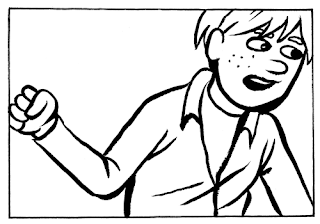Black backgrounds and black objects

There is a certain type of drawing technique in comics, that makes me grind my teeth whenever I see it. It's when an artist fills in the background with black, but they don't take the ink right to the edge of the linework. Instead, they leave this white glowing edge. IN some ways it feels like a stylistic choice, but I find it jarring. I think it's jarring partly because it feels like the artist didn't want to take away from their line art, it feels like they're being a little too precious.



